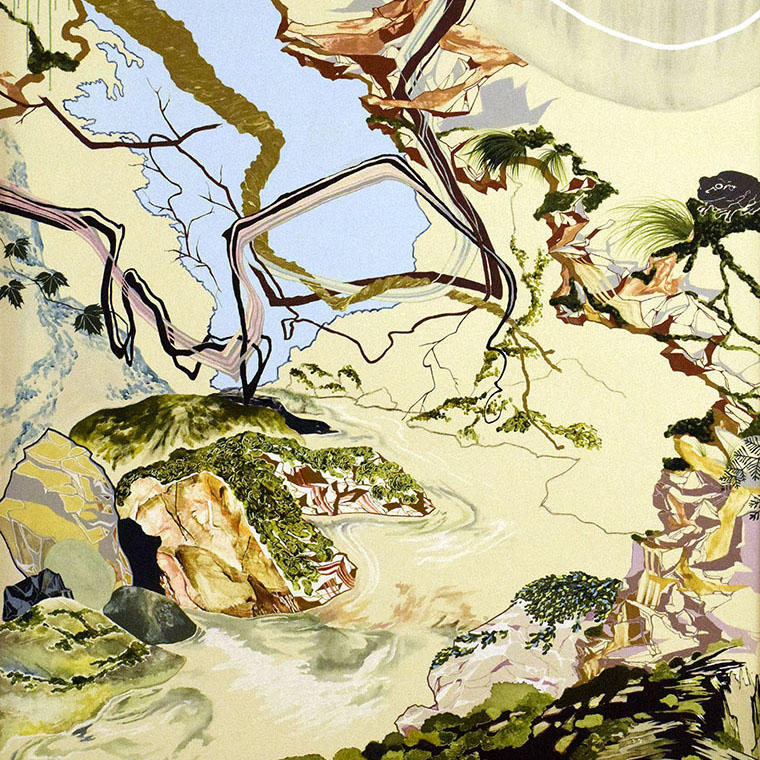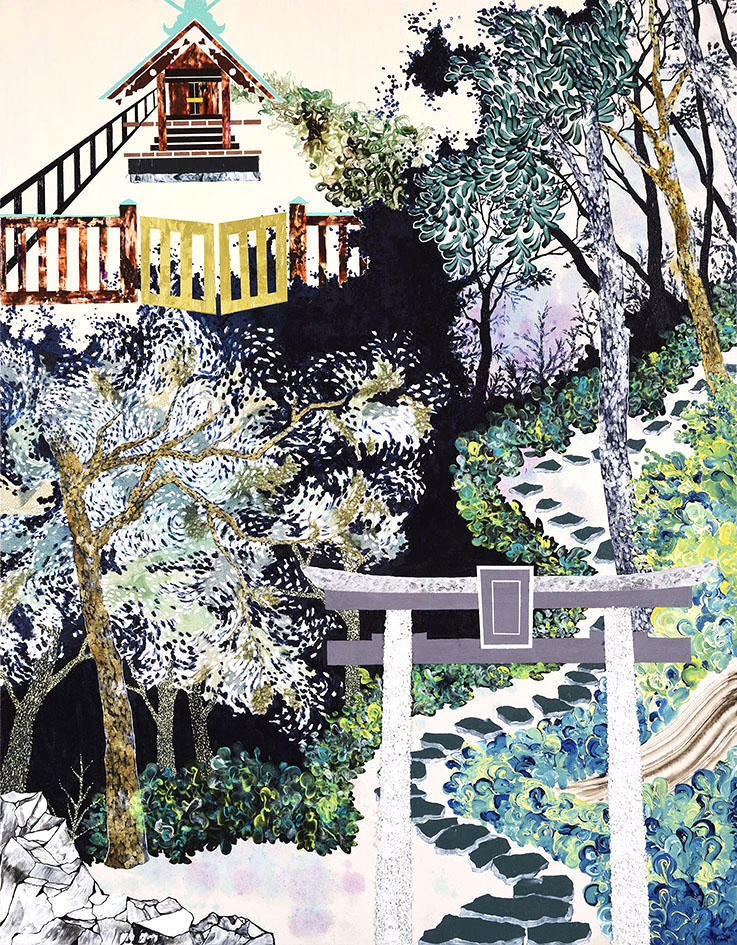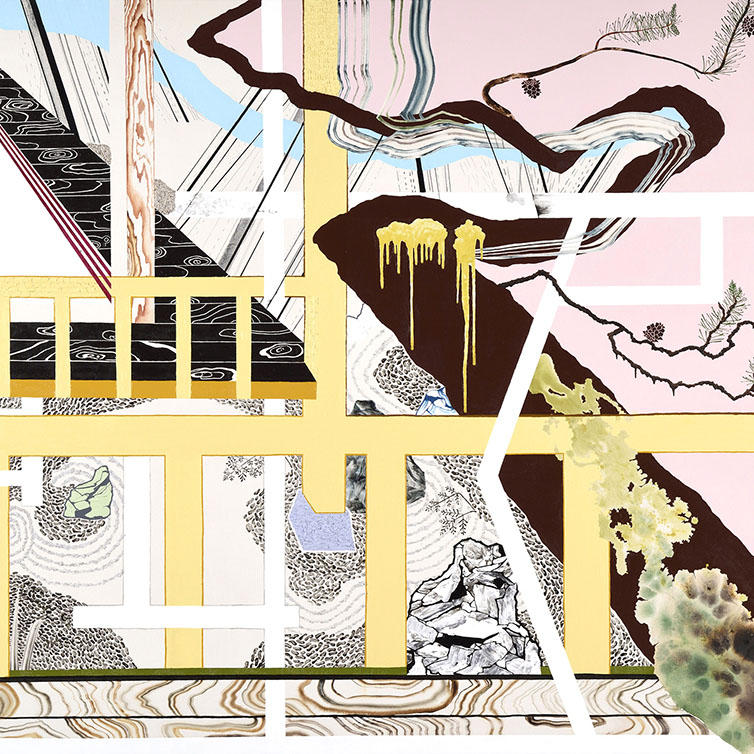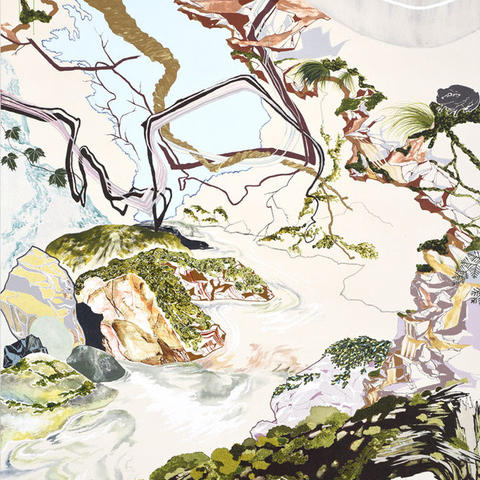Project
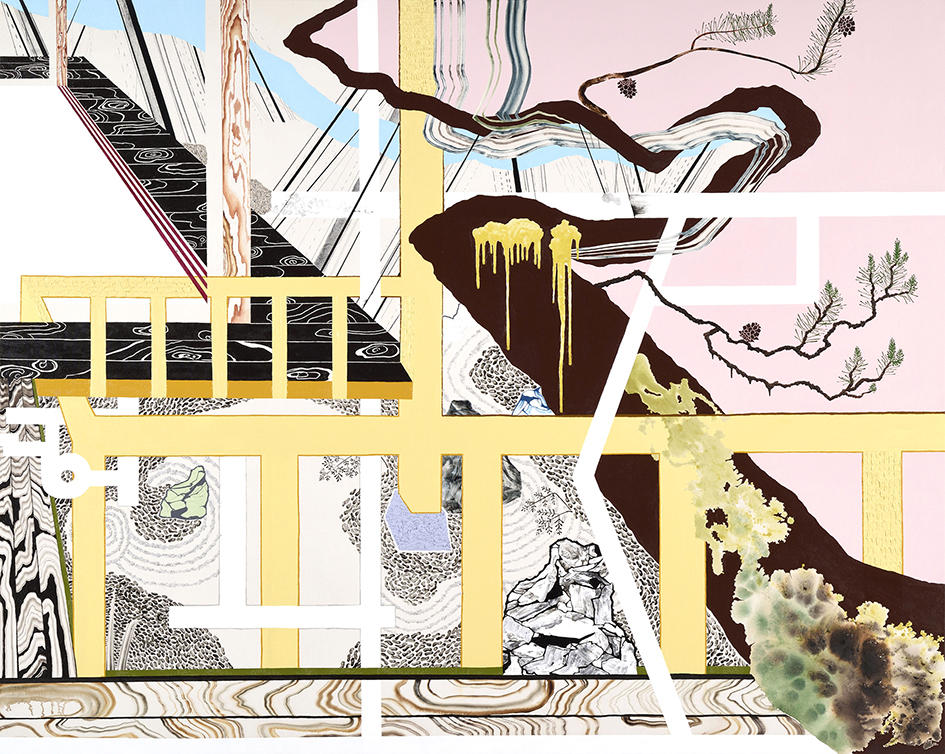
Interview of Rina Tanaka solo exhibition.
Gallery
On the occasion of her first solo show at Art Front Gallery, Rina Tanaka talked about her career, creative process which is very unique and her current interest for future plans.
I graduated from Nagoya University of the Arts in 2012. I used mainly oil at university switching to acrylic painting after graduation. For the current exhibition, I have painted both with oil and acrylic.
I draw landscape on the basis of my own memorized experience: once I decide this or that scenery to depict, then I start drawing after clarifying the amount of “time” to be integrated in the picture plane. For example, this painting depicts the garden at Daishinin, Myoshinji in Kyoto, presenting the memory there for thirty to forty minutes when the cloudy sky changed into rain. If my paintings are based on my personal memory, emotions or feeling are not represented directly. Rather, I trace forms included in the scenery, decompose them to recompose, considering various factors such as composition, move of viewpoints, different kinds of perspective, usage of paints as material, balance between density and blank. Also, according to the motifs to be depicted, I employ different methods to well balance the quality of each method.
In this painting, white lines refer to map of the precinct of the temple just as we can trace it on the map given at the entrance. The process of targeting spot via other places within the complex are all depicted in the single plane including both time in process and that at the end.
Regarding technique, acrylic paint tends to be flat because of the evaporation of water, and I compensate this shortage with oyster shell, ceramics or crystal powder, all considered as unusual materials, with the effect of volume when viewed at close point.

Ittekoi kiln, 2018 / 175 x 215 mm / ceramic / 2018
Ceramic works
I was interested in the contrast between textured surface of soil and that of glaze sometime after graduation. Two years ago I saw an exhibit of Kozan Miyagawa at Suntory Museum, which impressed me most with the usage of glaze just like paint.
I then hoped to use the glaze for painting and participated in a residency program in Shigaraki Ceramic Cultural Park from December 2017 through March 2018. There I manipulated soil for the first time and challenged forty kinds of glaze, which resulted in the new works exhibited here. Different glaze such as transparent glass-like one to mat one, or shiny glaze that are solved with each other to generate a gradation effect or stay as juxtaposed layers. The depth of glaze work attracted me so much.

The installation view of "Arts Challenge 2015"
In Arts Challenge 2015 at Aichi, I was given a so-called dead space to exhibit my works. I chose L shaped wall and pasted the wall painting on the cylindrical columns. I created five viewpoints on purpose to link the paintings of these two different spots. Through these artwork, I could overcome the pre-fixed notion that one composition refers to one painting, and became more interested in creating site-specific work. Also, enlarging my exhibit possibility is reflected in the usage of ceramics, and thus I succeeded in the two way exhibits.

The installation view of "Arts Challenge 2015"
In Arts Challenge 2015 at Aichi, I was given a so-called dead space to exhibit my works. I chose L shaped wall and pasted the wall painting on the cylindrical columns. I created five viewpoints on purpose to link the paintings of these two different spots. Through these artwork, I could overcome the pre-fixed notion that one composition refers to one painting, and became more interested in creating site-specific work. Also, enlarging possibility is reflected in the usage of ceramics, and thus I try to keep two way creation.

